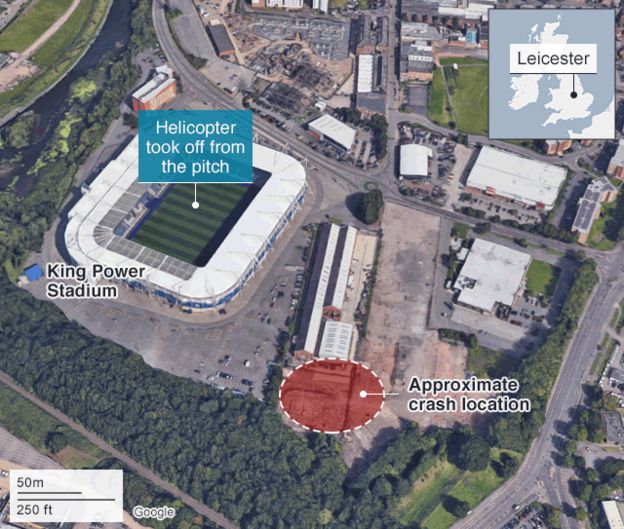The helicopter which crashed killing Leicester City’s chairman and four others span out of control after a mechanism became disconnected, investigators have said. An Air Accident Investigation Branch (AAIB) report found cockpit pedals had disconnected from the tail rotor.
This caused the AW169 aircraft to turn uncontrollably to the right before it crashed near the King Power Stadium. The AAIB said its inquiries into the 27 October crash are ongoing.
Leicester City owner Vichai Srivaddhanaprabha, two members of his staff Nusara Suknamai and Kaveporn Punpare, and pilots Eric Swaffer and Izabela Roza Lechowicz were killed in the crash. A public memorial for Mr Swaffer and Ms Lechowicz – who police said was a passenger at the time of the crash – is taking place at Guildford Cathedral on Thursday. An inspection at the crash site found parts of a mechanism linking the pilot’s pedals to the tail rotor had become disconnected and there was a “build-up of black grease” on one component.
The failure of the system led to the pitch of the tail rotor blades being changed “until they reached the physical limit of their travel”. The report stated: “The initiating cause and exact sequence of the failure that resulted in the loss of tail rotor control is being investigated as a priority.”

Widely shared video footage of the helicopter’s last flight, taken from inside the King Power Stadium, shows the AgustaWestland AW169 climbing normally for about 40 seconds before it pauses and goes into a downward spin.
The aircraft reached an altitude of approximately 430ft then crashed to the ground.
It was rapidly engulfed in a post-impact fire and all five people on board were killed.
Following the crash, the European Aviation Safety Agency ordered safety checks to be carried out on the tail rotors of AW169s and similar models.



